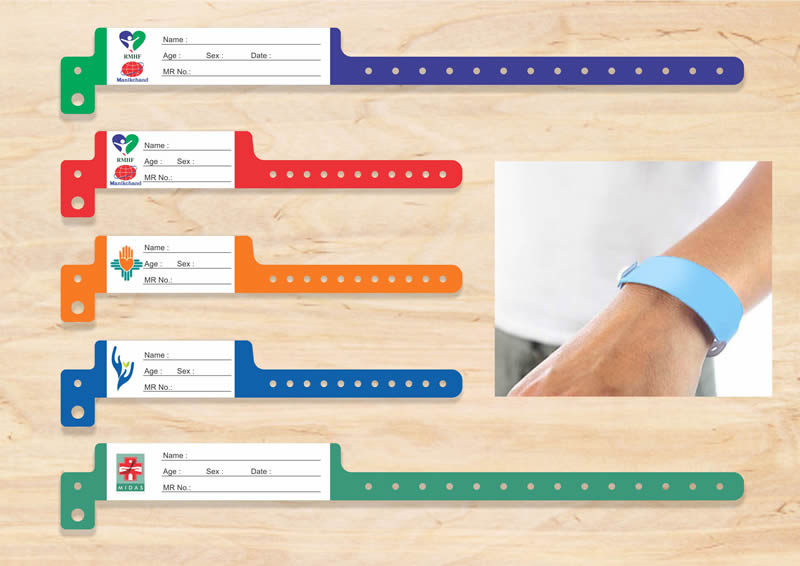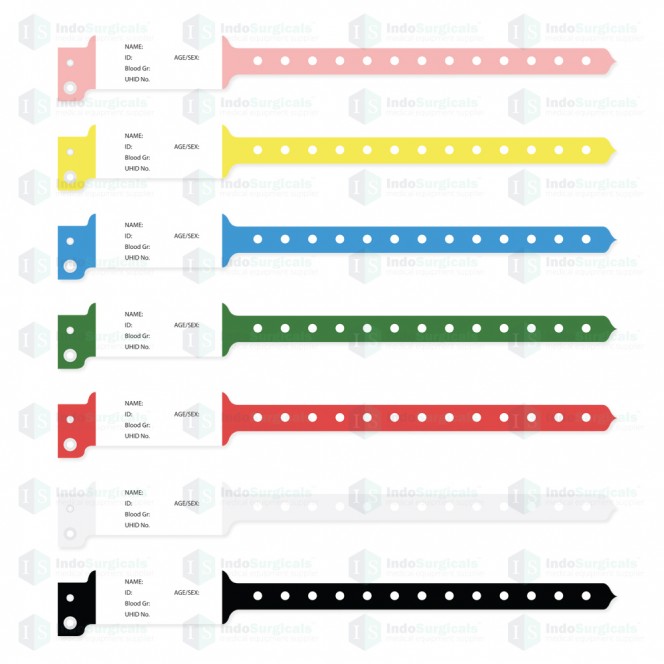How to Choose the Right Patient Identification Band for Your Healthcare Facility
How to Choose the Right Patient Identification Band for Your Healthcare Facility
Blog Article
Checking Out the Various Kinds of Patient Identification Band Utilized in Clinical Facilities
In the detailed globe of medical care, the important function of Patient Identification bands often goes unnoticed. These bands, differing from straightforward paper wristbands to innovative RFID bands, develop the foundation of Patient safety and security protocols, ensuring precision in Patient Identification. The substantial diversity of these bands, each with its special advantages and constraints, is frequently forgotten. As we browse via this subject, one may gain insight into the refined intricacies and crucial significance of such bands in medical centers.
Recognizing the Relevance of Patient Identification Bands
While they may appear like plain accessories, Patient Identification bands play an important duty in clinical centers. These bands work as an important device for verifying Patient identification, stopping medical mistakes connected to misidentification. The bands typically show crucial information such as the Patient's name, age, blood group, and any kind of known allergies. They enable medical care specialists to rapidly access this essential information, thus promoting precise and punctual clinical treatment. Patient Identification bands additionally aid in enhancing management jobs, guaranteeing exact record-keeping and payment. Despite their simplicity, these bands symbolize the concept of Patient safety and security, a foundation of high quality healthcare. Without them, the threat of medical errors, and subsequently, Patient damage, could substantially raise.
Conventional Paper Wristbands: Their Usage and Limitations
Traditional paper wristbands have actually been a staple in Patient Identification throughout numerous medical facilities. While their usage prevails, they harbor certain constraints that might impact their performance in Patient management. This area will focus on the extent of their application and the integral disadvantages connected with their usage.
Paper Wristbands: Usage Scope
In the world of Patient Identification, paper wristbands have actually long held a crucial duty. These bands are normally used in outpatient setups, where the Patient's keep is short-term. The wristbands include essential details such as the Patient's name, day of birth, and an unique Identification number. This easy, yet effective system, permits doctor to swiftly and properly determine people, guaranteeing the correct treatment is administered. Paper wristbands are likewise used in emergency situations, where rapid Identification is paramount. Their use reaches events like blood contribution drives and mass vaccination programs, better emphasizing their flexibility. In spite of innovations in modern technology, the modest paper wristband stays a dependable and cost-efficient solution for Patient Identification in various healthcare situations.
Limitations of Paper Wristbands
In spite of their widespread use, paper wristbands are not without their drawbacks. In enhancement, paper wristbands usually lack the technological capabilities of even more contemporary alternatives, such as barcoding or RFID chips, restricting their performance to merely showing created details. Paper wristbands can create pain or skin irritability to some patients, especially when used for extensive durations.
Barcoded Wristbands: Advancements in Patient Identification
While Patient Identification has actually long been an important aspect of healthcare, the introduction of barcoded wristbands represents a substantial jump ahead. These bands leverage the simpleness of barcoding modern technology, enabling Patient info to be quickly checked and accessed. They boost the rate and precision of Patient Identification, lowering the threat of medical errors connected to misidentification. Barcoded wristbands are cost-effective, simple to produce, and get rid of handwriting mistakes usual with hands-on systems. Nonetheless, they are not without restrictions. While they offer improvements over conventional bands, the barcode can come to be smudged or used, making it unreadable. Regardless of this, barcoded wristbands stay a necessary tool in modern-day health care setups, signifying the intersection of technology and Patient treatment.
Radio Regularity Identification (RFID) Bands: an Action In The Direction Of Futuristic Medical Care
The advancement of Patient Identification bands has actually brought concerning the introduction of Superhigh frequency Identification (RFID) Bands (patient identification band). These innovative gadgets existing crucial advantages for health care facilities, using an extra reliable and technologically progressed ways of Patient Identification. The execution of RFID in medical care is a substantial step in the direction of an extra futuristic technique Bonuses to Patient management and safety
Comprehending RFID Bands

RFID Bands: Trick Benefits
Primarily, these bands improve Patient safety by offering exact, rapid Identification, consequently reducing clinical errors. RFID bands can store a substantial quantity of Patient information, consisting of medical history and allergic reactions, making it possible for customized care. In general, RFID bands represent a considerable innovation in Patient Identification innovation, profiting both clients and healthcare carriers.
Executing RFID in Healthcare
As we tip into a technically innovative era, the execution of RFID bands in health care comes to be progressively vital. These bands offer a seamless method to track and identify clients, guaranteeing their safety and boosting effectiveness in therapy procedures. RFID bands provide many advantages over standard Identification methods. They can save a large amount of information, including the Patient's clinical history and therapy strategies, which can be quickly accessed by doctor. This information assists physicians make informed decisions regarding the Patient's therapy strategy. RFID bands decrease clinical mistakes by supplying exact Patient Identification, which is essential in preventing misdiagnosis or wrong medicine administration. Therefore, the execution of RFID bands is a substantial action towards enhancing Patient security and healthcare delivery.

Color-Coded Wristbands: Assisting in Quick and Accurate Diagnosis
In the busy atmosphere of a clinical center, color-coded wristbands have actually emerged as vital devices for swift and exact Identification of a person's medical problem. These wristbands, used by clients, lug certain shades that correspond to different clinical problems or conditions. This system is created to supply immediate visual cues to healthcare service providers, enhancing Patient security and care high quality.
Strategies for Reliable Application and Management of Patient ID Bands
Attaining ideal use of Patient Identification bands requires a well-structured method for redirected here their application and monitoring. Patient education and learning is likewise essential; individuals have to recognize the objective of the bands and the need for their consistent wear. It's necessary to have a back-up plan in location, such as barcode scanning or biometrics, to ensure that Patient Identification is never ever compromised.
Verdict
Patient Identification bands are essential in clinical centers to guarantee safety and security and accuracy. Effective application and management of these bands can dramatically lower medical errors, increase performance, and enhance overall Patient care.
These bands, differing from simple paper wristbands to sophisticated RFID bands, form the backbone of Patient safety and security procedures, ensuring accuracy in Patient Identification.The development of Patient Identification bands has brought about the development of Radio Frequency Identification (RFID) Bands. In general, RFID bands stand for a substantial improvement in Patient Identification technology, benefiting both patients and health care carriers.
RFID bands lower medical original site mistakes by providing accurate Patient Identification, which is crucial in avoiding misdiagnosis or incorrect medication administration. Patient education is also vital; patients need to recognize the function of the bands and the demand for their constant wear.
Report this page